Connie Johnson Hambley's Blog, page 24
May 3, 2015
A2R Marketing: Book Launch, Part '3-F'
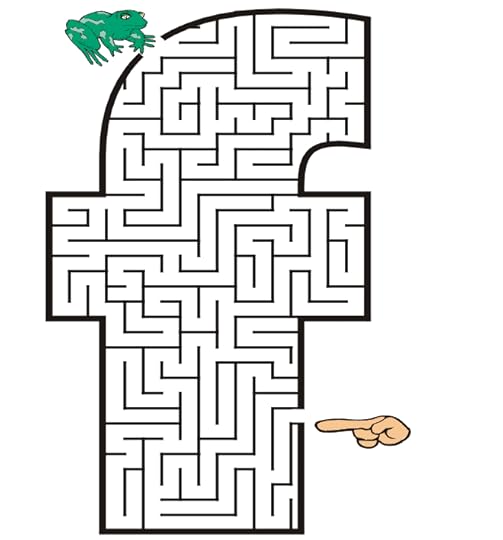 Image from: http://coloringpagesjos.net/
Image from: http://coloringpagesjos.net/For most authors, launching a book often begins with three big "F's."
FriendsFamilyFacebook
I'll add one more: Favicon*.
You know your goals and you want to start this conversation now. You've made a choice that you're writing for more than the pure love of the written word and that you want to reach as many people as possible. Your big toe is dipping into the social marketing river.
You're not selling used cars and not offering a free set of Ginsu knives and a Last Supper tablecloth with every late-night purchase. Marketing is not synonymous with hammering. It's synonymous with conversing.
Learning about the tools, techniques, sites, blogs, and people that populate the social marketing space is a HUGE undertaking. It's easy to become overwhelmed. You have to focus your efforts so you don't feel like you're chasing your tail all day long.
If you are a beginner in the world of marketing (remember, this is a conversation we're starting, not a media blast), you already have the beginnings of a platform. The first segment of your marketing plan contains the 3F Softstart: Friends, Family, and Facebook.
Friends: Chances are your friends have already read your work in its various stages of undress. They've seen your poem or short story in the daylight and have gently told you that its dimply butt is not pretty. So, you went back and worked on its shape and tone. They know about you. They know about your work. They will support you and tell more friends. Ask if they will host a book group for you. Family: After a few more deep breaths, roll your work out to mom, dad, and that sister that doesn't have a kind word to say about anything. If you're smart, you'll listen very critically to their comments. Much will be good, solid advice. Much of it will be crap. This is the beginning of where you need your backbone and the clear message of what you are trying to say in your work. If you take everyone's advice and change your work or your message to suit their opinion, you will end up with poo on a page and a muddy image. Go to your mountaintop, think about what you were trying to convey and focus in on that message. Putting yourself "out there" is hard, hard work. If you are not firm in your message, you will be weakened by criticism and tempted to morph into something you are not.Facebook: With the click of a "Post", you will reach a few hundred of your friends and friends of friends. If you're like most people, this is on-the-job-training for social media. Use this stage for a few items.Readership Feedback and Identification - See who your work resonates with. Who is commenting? What are they saying? Are there any points in common with the folks who like or don't like the work? This is the beginning of knowing who your audience is. Knowing who your audience is will help you answer the question, "How do I reach my core audience in the most effective and efficient way?"Vetting - Is your message the right one for you and your work? Are you reaching who you want to reach? If not, take a step back and figure out why.Launchpad for Your Message - Facebook has a wealth of tools out there for the emerging author and small business person. Click around and learn the difference between "Likes", "Groups" and "Subscribe". This is where your social marketing voyage really begins.(There is a difference to remaining firm to your message and adapting to the marketplace. Think of it this way: You have a party-neutral book and a message about what it takes to be a woman in politics. You're meeting someone for the first time and the conversation turns to the upcoming election. You see their expression change when you mention Michelle Obama. This is not the time to blabber on about all the things Hilary has done well or poorly. Take the time to figure out where you agree and build your conversation back up from there. Adapt your message to your audience and find out how to hone your message so you will be heard, not tuned out.)
Think of Facebook as a social media with water wings. Its population of friends and family will keep you afloat while you learn the skills of leveraging your network into greater influence.
Essential tools for this phase:
Succinct summary of your work that also answers the question, "Why this work is worth your time."Image of your book cover. (Yes. Even before the book is complete, invest in a cover. Social media loves images. Associating your work with a cover image encourages awareness and sharing.)Decent headshot of you. Please resist the temptation of cropping a headshot from your nephew's wedding two years ago. Candid shots are great, but nothing beats a professional picture.
*Never in a million years did I think I would need to know what a favicon was. Short for favorites icon, it's also known as a page icon or an urlicon and is an icon associated with a particular website or webpage. Take a look at the tab for this page. See that shamrock? Yup. It's a favicon and is part of a cohesive image branding of me and my book. Did you think Irish? I'll bet you did. Consider yourself educated.
Published on May 03, 2015 08:09
A2R Marketing: Book Launch, Part 2
Having certain core concepts down pat is essential for marketing your written work. Knowing your one sentence grab, audience, goal, tools, and budget allows you to take control of promotion. Marketing is about proactively reaching out to readers.
If you're lucky enough to be able to hire a someone, congratulations, but you still need to bring a clear sense of who you are and what you want to accomplish into that relationship or you risk wasting those dollars. By having a clear sense of identity for you and your book and knowing your goals will maximize the return on your investment.
The most frequent questions I receive are "When do I start marketing?" and "What are my first steps?"
The first question is easy. Start marketing even before you have a book or other written work published.
I don't care whether you are a traditionally published author, indie, or hybrid, you need to establish a presence to allow readers to find you. The biggest mistake I see is authors waiting for their book to be published before they start their marketing efforts. The reason for this is two-fold.
New authors hide behind their books and think no one will be interested in them. Wrong! Readers are interested in the person behind the words. They have a deeper reading experience when they know a little bit about the author. Interesting people write interesting books. Readers are smart. They seek out voices that make them think. New authors fear they only have one book in them. If you're reading this blog, you are more than a one trick pony. You are more than one book. You have a voice, a unique world perspective and a backbone. Use them.And here's a dirty little secret: If you are seeking a publisher, a digital footprint matters. Twitter followers, blog subscribers, and Facebook likes say "This author is a good bet because she has reduced my financial risk by having a foundation of followers I can now leverage into book sales." The same is true for readers. Having more people interested in you reduces the risk to the reader by saying "Many people find this person interesting. The investment of my time here is a good bet." The earlier you begin your marketing efforts, the stronger your platform.
The second question is more difficult to answer. The steps you take to market yourself are dependent upon two factors:
How you view "marketing." If you view marketing as an ongoing shout of "BUY MY BOOK!" you will grow hoarse, your listeners will grow deaf and everyone will become bored. How much time and effort you will devote to you. Having a plan is worthless if you don't follow it. Creating a realistic and workable plan and sticking to it leads to success. Duh!Marketing is about captivating the audience. It's about pulling the audience to you with interesting and engaging content. Terrific insights into creating engaging engaging content can be found on Michael Boezi's blog.
Next up? The 3F Soft Start.
If you're lucky enough to be able to hire a someone, congratulations, but you still need to bring a clear sense of who you are and what you want to accomplish into that relationship or you risk wasting those dollars. By having a clear sense of identity for you and your book and knowing your goals will maximize the return on your investment.
The most frequent questions I receive are "When do I start marketing?" and "What are my first steps?"
The first question is easy. Start marketing even before you have a book or other written work published.
I don't care whether you are a traditionally published author, indie, or hybrid, you need to establish a presence to allow readers to find you. The biggest mistake I see is authors waiting for their book to be published before they start their marketing efforts. The reason for this is two-fold.
New authors hide behind their books and think no one will be interested in them. Wrong! Readers are interested in the person behind the words. They have a deeper reading experience when they know a little bit about the author. Interesting people write interesting books. Readers are smart. They seek out voices that make them think. New authors fear they only have one book in them. If you're reading this blog, you are more than a one trick pony. You are more than one book. You have a voice, a unique world perspective and a backbone. Use them.And here's a dirty little secret: If you are seeking a publisher, a digital footprint matters. Twitter followers, blog subscribers, and Facebook likes say "This author is a good bet because she has reduced my financial risk by having a foundation of followers I can now leverage into book sales." The same is true for readers. Having more people interested in you reduces the risk to the reader by saying "Many people find this person interesting. The investment of my time here is a good bet." The earlier you begin your marketing efforts, the stronger your platform.
The second question is more difficult to answer. The steps you take to market yourself are dependent upon two factors:
How you view "marketing." If you view marketing as an ongoing shout of "BUY MY BOOK!" you will grow hoarse, your listeners will grow deaf and everyone will become bored. How much time and effort you will devote to you. Having a plan is worthless if you don't follow it. Creating a realistic and workable plan and sticking to it leads to success. Duh!Marketing is about captivating the audience. It's about pulling the audience to you with interesting and engaging content. Terrific insights into creating engaging engaging content can be found on Michael Boezi's blog.
Next up? The 3F Soft Start.
Published on May 03, 2015 06:32
April 29, 2015
Perking My Next Novel

The ink of my new book is not dry and I've already begun working on my next. No, I'm not cranking out my 1500+/- words per day yet and I'm not scribbling down a synopsis. In fact, I don't look busy at all. If we were to meet, you'd find me pleasant enough to speak with, but mildly distracted and not paying full attention to our conversation.
Believe me. I'm very, very busy.
I'm perking.
The books I write are part of a series. The characters and time periods are defined. The structure and histories of the story are established, and a tone has been set. All I have to do is decide what happens next. Easy, right?
It's both a luxury and a curse to write a series. It's a luxury because many decisions have already been made. Who is my main character? What drives her? What does her world look like? But it's a curse for the same reasons. I think creating the next installment is akin to playing a game of bumper pool. You know you want to put the four ball in the corner pocket, but it's not a straight shot to get there. Hard stops and obstacles—like giving your city-dwelling character hay fever in one book, then wanting her to live in the boonies the next—block the way and force you to take alternative angles and approaches. Getting to that corner pocket may take more tries, but eventually you'll sink that ball. It may be more difficult, but the game becomes much more interesting.
So, right now, I'm perking. I'm thinking about all the reasons why readers wanted to know what happens next. I'm thinking of the time period of the novels and the events that shaped the character's world and our real world into what we know today. I'm thinking of what conflicts we bring upon ourselves and what are thrust upon us. I'm thinking of what questions I may have raised in the first two books that I can answer in the third. I'm thinking of ways to give my readers a wild emotional ride and thrilling reading experience.
All of the ideas are roiling around somewhere deep inside my head. An idea heats up and darts to the surface, where it then filters down over imagined and hard facts. The longer this happens, the more potent the brew becomes. I add things to the mix. A story steeps. The color deepens.
If you see me walking the beach or staring off in space at a gathering, please understand. I'm working.
The Troubles, sequel to The Charity, will be released May 20. Pre-order your copy now.
Published on April 29, 2015 12:44
April 3, 2015
Noir at the Bar Boston Event

Noir at the Bar 2The Pour House, Boston, Massachusetts
Boston has a new literary tradition. Back by popular demand, Noir at the Bar features some of the region's best noir authors. Authors hail from Maine, New York, New Hampshire, Massachusetts and more. From hard boiled crime, mystery and thriller, to the edges of horror, readers will be entertained with original works crafted especially for the evening. Each author will read for about ten minutes.
I'm very pleased to have been invited to be a part of this night. As time gets closer to the launch of The Troubles, The Charity's sequel, I'll be reading something to whet reader's appetites for more of the main character's story.
If you're not from around Boston, make sure you don't peg yourself as an out-of-towner. Locals love their "Noo-WAH at da Bah in BAH-stin." And be careful where you pahk ya cah.
I'll be joining Stona Fitch, Mike Miner, Chris Irvin, Patrick Shawn Bagley, Bracken MacLeod, Dale Phillips, Tony McMillen, and Errick Nunnally.
Published on April 03, 2015 04:20
March 29, 2015
When Your Editor Slaps You Upside the Head
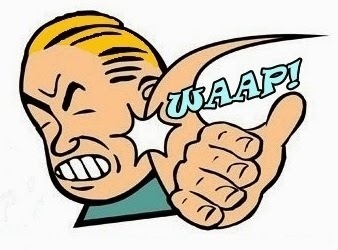
Whoo, doggie! I'm on a wild ride.
I'm in the process of reaching out and getting book blurbs from authors I greatly admire and who inspire me with their accomplishments. It's anxiety provoking because I'm forcing myself to reach beyond my comfort zone. I'm human. Maybe it's an author thing, a creative-person-angst-thing or a woman thing. Or maybe I'm triple cursed by feeling all three, but I'm keenly aware of all of that isn't perfect.
I was at a reading last night for an author who expressed the same sentiment. Myfanwy Collins read from her beautiful novel, The Book of Laney . Afterwards, she commented she couldn't bear reading the whole work again now that it's published because of the changes she would want to make. Her reading left audience members in tears and she still felt she could edit more. I know she would agree that at a certain point in time, you just have to declare your work done and get it out there.
Feedback from writing groups or beta readers is one thing. Feedback from authors you greatly admire is another. So, when I received feedback on my book from an award winning author, I really took the message to heart. To be blunt, the author was critical of my first paragraph. Egads! If a reader doesn't like your first paragraph, what is going to make them want to read more? It's the Big Kahuna. First sentence leads to first paragraph that leads to first chapter that leads to let's-buy-this-book-and-read-the-whole-thing. Simply put, screw up early and you're screwed.
I yelped and sent the message to my editor. As a senior editor at a major publisher, she knows her stuff. I trust her. Getting barked at by the author made me question if I was doing enough. Maybe I should work the manuscript more. Maybe I've missed something.
The only thing I was missing was a good slap upside my head. This is what she said:
--
(I smudged the author's ID for obvious reasons. I love and admire him/her and always will.)
Connie,
Everyone will have an opinion. Everyone's a critic. This person wants to let you know that s/he knows more about writing than you do--and maybe that's true, but s/he isn't your audience and s/he's not invested in you. I know this because your opening scene in its totality creates loads of tension and mystery. It totally hooks the reader. S/He wants you to skip the foreplay (creation of the setting) and jump to the action. What s/he doesn't tell you, however, speaks louder to me than this one seemingly clever comment.
You've received a lot of feedback, and no one, including me, felt the opening paragraph was damaging. Why? Nobody stopped after the first paragraph and dashed off an email to you, did they? No. They didn't. Why not?
We did a boatload to rid the manuscript of its passive voice and weeks of work to unload a lot of unnecessary dead weight. This person did not read your book. Nor does s/he care about the construction of your novel if this is the only comment s/he gave you. Interesting how s/he has nothing else to say, isn't it? That's because s/he didn't read it and never intended to. One gold nugget, and s/he's out. All that glitters is not gold, my friend.
What s/he doesn't tell you (or doesn't see) is the way you construct this opening paragraph (as) a telling paragraph; it's setting the scene... You did this intentionally to set the scene, not the action. So, besides the fact that s/he doesn't like the word "was," what other investment does s/he make? None. You may as well delete the thing. Then what? Rework the paragraphs? The entire opening scene? Then what? Keep second-guessing yourself? Or, get more opinions on it?
I get her/his point, I really do, but I'm telling you, if s/he is annoyed by the first paragraph, stops to tell you about it in detail, and offers little else, then I guarantee you that s/he was never invested in reading more than the first page of your novel. That kind of feedback has its place, but I have a three-letter word for writers who flaunt their self-righteous "wisdom counsel" like this, beginning with "a" and ending in double "s."
Be cautious of blow-and-go gold nuggets like this. They may have value, but I find them limited and destructive overall--as sincere and helpful as his/her intention may have been. You wrote an exciting, unusual story that your readers are going to devour. This isn't my genre, truth be told, and I had no problem sticking with the story. The writing is strong. Characters and plot are strong. Backstories are strong. Action, pacing, transitions, and flow are strong.
When and if you're lucky enough to get slammed by The New York Times Magazine, Connie, jump for joy and keep writing, keep writing, keep writing. What that really means is they think you are good enough to review.
--
This is why I love my editor. I cannot be all things to all people. I need to be confident that I've written another kick-ass book. Will everyone love me? Nope. But that's okay.
More on Author to Reader Marketing (A2RMarketing) can be found here.
Published on March 29, 2015 07:24
March 26, 2015
Book Blurbs and Marketing: Putting on Your Big Girl Pants (A2R Marketing)

There comes a time in your book writing life that you have to put on your big girl pants and get out into the world.
There are many stages to getting a book in front of the public. When a launch looms, palms begin to sweat and the second guessing kicks in. At some point, a writer must trust that she has made every effort to create the best work possible. Then it comes time to press "Send."
Before the final draft is sent to your publisher for public consumption, an Advanced Reader Copy (ARC) or uncorrected proof is distributed for - gulp - blurbs. Early reviews and cover blurbs are an essential step in a successful launch. This is where the rubber hits the road.
A blurb is a one or two sentence endorsement of your work that graces the cover or first pages of your book. The best are from a person with a voice, a name, and an audience. Maybe it's another author in your genre or a professional in an industry your book touches. What horror author would not want a "Gotta read this book!" from Stephen King or a "Love It!" from Blake Shelton if your romance novel touches on life as a country singer.
I am a firm believer in soliciting feedback on a work in progress at many points during the writing stages. Writers groups and beta readers are critical components of creating a good work and the more harsh the criticism the better you will learn. Having your manuscript buffed by a professional editor is essential.
Lots of advice exists for asking for a blurb. There is even advice for writing your own blurb. But, there is very little advice in getting up the nerve to ask for a blurb. This is where big girl pants help.
If you're traditionally published, many publishers have a stable of folks they routinely ask to blurb for a new book. It can be a give-to-get: I'll give your books blurbs if you give my book a blurb. It's the way business works. But what if you don't have that kind of support from your publisher or you're an indie. Then what?
Then you have to do it yourself.
Read. Read. Read. Note the authors in your genre that resonate with you. Write down their names. Figure out how to contact them. Meet them if you can.Make sure you have the best damned book you can create. Don't skimp on the process. Workshop it. Beta it. Have it professionally edited. Aspire. Reach. Target peers but also target someone who is beyond where you are now and is where you hope to be. Know the answer to this question: Why should I blurb for you? Craft the best possible query letter you can. Then shorten it.This process starts six to eight weeks before your launch date. Potential blurb writers will need at least three to four weeks to read your ARC. Hope for them to say "Yes." Don't fault them or you if they say "no."
Be gracious. Be appreciative. Do your homework.
...then put on your big girl pants and press "send."
More on A2R (Author to Reader) Marketing can be found here.
Published on March 26, 2015 09:34
March 15, 2015
Help for Local Stable
To everyone at Flying High Stables,
I was devastated to learn of the toll this winter took on your farm. People in the horse community look out for one another and the outpouring of support to your stable was heartwarming. To help the farm and to acknowledge the community that supports Flying High, I'd like to dedicate proceeds of signed copies of my book to the farm.
My book, "The Charity," captures the perseverance and grit that are hallmarks of the equestrian world. Anyone who would love to read a good book and support your farm can go to my blog and purchase a copy by using the click through in the upper right corner. Please have your supporters state "Flying High" in the memo line.
I wish all the best for Flying High.
Sincerely,
Connie Johnson Hambley
Amazon Reviews may be read here.
Published on March 15, 2015 15:52
March 11, 2015
Poughkeepsie Journal Article on the Heinchon Dairy Arson
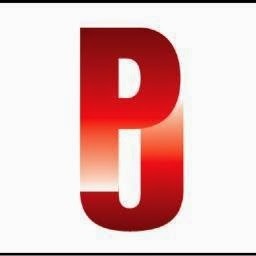
Thanks go to the Poughkeepsie Journal for helping to mark the fiftieth anniversary of my family's barn fire.
The anniversary allowed us to reach back to that day and reflect on the changes one event had on our family. Cobwebs and dust on old memories were swept away and deep appreciation for what we have in our lives - rather than what was taken from it - emerged.
Heinchon Dairy is no longer in business, but Eastern Hay and Heinchon's Old Farmhouse Ice Cream are thriving.

More pictures may be found on my Facebook page here.

The above picture is what the barn and surrounding neighborhood. Pawling folks will recognize the John Kane house on the right, Dutcher Golf course in the foreground and Route 22. The barn, silos, dairy and my home are in the center.

Published on March 11, 2015 05:37
February 5, 2015
True Grit and The Art of Productivity
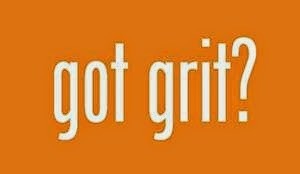
We creative types have a black hole in our lives. In its sweetest form, we call it our "muse."
We stare at a blank canvas or keyboard and sigh. We look out our windows and wait for our muse's arrival all the while believing that our work can only be done deep within this elusive synergistic partnership. Much has been written about finding our muse. Without our muse beside us, we dither with writer's block or fret about a creative dry spell. If this has happened to you, grab a hold of whatever screen you are reading this on and slap yourself over the head with it.
Waiting for your muse in order to produce is utter and complete nonsense. Breath deeply and square back your shoulders. Grow up. Dig in and use some grit.
"Grit" is defined as having courage and resolve or possessing a certain strength of character. It's a "stick-to-it-ness" and perseverance that neutralizes the alternatives of giving up on or drifting away from a task.
One of the best discussions of the power of grit was given at a TED talk by Angela Lee Duckworth. In it, she discusses how innate intelligence is not enough to guarantee success, but that grit is the better predictor. She describes her successful math students as those who actively and continuously engaged on a task until it was mastered. IQ did not matter. Sticking to it did.
Grit is different from discipline. A recent posting caught my attention with the headline, "Screw motivation, what you need is discipline." My favorite line is, "If you wait until you feel like doing stuff, you’re fucked." Perfectly stated! Motivation is a mood. Discipline, it states, is a process and the engine to productivity. I agree with the post, but argue more is needed than merely discipline. Discipline makes us say "no" to temptations and time sinks (like water cooler chats or vacuuming under the couch one more time). Discipline parks our butts in the seat while waiting for the muse bus to arrive.
Grit makes you an active participant engaged with being productive. Grit makes us put one foot in front of the other and forces words into sentences. Grit makes us sideline our fears and supports us in stepping up to the task. Grit helps us realize that we are the only ones who can make it happen and then makes us take those small steps forward in our goal.
I hear examples of grit every day. It's the writer who stays glued in her seat until her daily word count is met. It's the artist who allows herself to begin a piece of art with a crappy idea only to begin molding it into something fresh and new. It's the executive who gathers the team together one more time for an ad hoc brainstorming session. It's the worker who asks for help and insight that one time more.
Grit is in each of us when we turn our backs on the window and stop waiting for our muse.
Published on February 05, 2015 10:10
January 24, 2015
Author Event: Noir at the Bar in Boston-POSTPONED
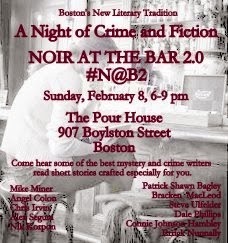
Noir at the Bar 2The Pour House, Boston, MassachusettsPOSTPONED DUE TO SNOW. NEW DATE TBD.
Boston has a new literary tradition. Back by popular demand, Noir at the Bar features some of the region's best noir authors. Authors hail from Maine, New York, New Hampshire, Massachusetts and more. From hard boiled crime, mystery and thriller, to the edges of horror, readers will be entertained with original works crafted especially for the evening. Each author will read for about ten minutes.
I'm very pleased to have been invited to be a part of this night. As time gets closer to the launch of The Troubles, The Charity's sequel, I'll be reading something to whet reader's appetites for more of the main character's story.
If you're not from around Boston, make sure you don't peg yourself as an out-of-towner. Locals love their "Noo-WAH at da Bah in BAH-stin." And be careful where you pahk ya cah.
I'll be joining Mike Miner, Angel Colon, Chris Irvin, Alex Segura, Nik Korpon, Patrick Shawn Bagley, Bracken MacLeod, Steve Ulfelder, Dale Phillips and Errick Nunnally.
Look for updates on Twitter with tag #N@B2.
See you there!
Published on January 24, 2015 14:30



